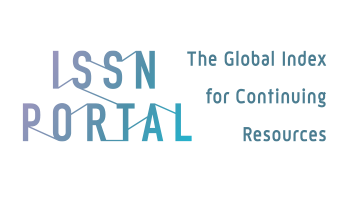HUBUNGAN LINGKAR LENGAN ATAS (LILA) DENGAN BERAT BADAN LAHIR BAYI DI WILAYAH KERJA PUSKESMAS SEI LANGKAI KOTA BATAM
DOI:
https://doi.org/10.37776/zkeb.v11i1.690Abstract
In pregnancy globally that is equal to (35-75%). WHO also noted that (40%) maternal deaths in developing countries are related to chronic energy deficiency. Pregnant women who suffer from malnutrition such as chronic lack of energy have a greater risk of illness and therefore malnutrition in pregnant women should be avoided so that pregnant women are a target group that needs special attention. The countries that experienced the highest incidence of CED in pregnant women were Bangladesh (47%), while Indonesia was the fourth largest with prevalence (35.5%) and Thailand with the lowest prevalence (15–25%). The purpose of this study was to determine the relationship between Upper Arm Circumference (LILA) and Birth Weight of Babies in the Work Area of the Sei Langkai Health Center Batam City in 2020. This study was a Case Control (Retrospective) study, the research site was in the Sei Langkai Health Center Work Area Batam City from the month August-September 2020, the study population was mothers who were recorded to have given birth in the Work Area of the Sei Langkai Health Center, Batam City in June 2020. Sampling using the Total sampling technique, the number of samples was 61 respondents, the instrument used for the independent variable and the dependent variable was using a checklist. used is chi-square analysis. Bivariate results, from 61 respondents, the results obtained showed that respondents who had an Upper Arm Circumference (LILA) <23.5 cm as many as 4 respondents (6.6%) gave birth to babies with birth weight <2500 grams (LBW) 4 (6 ,6%). While respondents who have an Upper Arm Circumference (LILA) 23.5 cm as many as 57 (93.4%) gave birth to babies with a birth weight of 2500-4000 grams (Normal) 57 (93.4%). The results of the statistical test with Chi-Square obtained p value = 0.000 <0.05 it can be concluded that Ho is rejected, meaning that there is a Relationship between Upper Arm Circumference (LILA) and Infant Birth Weight in the Work Area of the Sei Langkai Health Center Batam City in 2020. Suggestions to It is hoped that the research location can improve the service system, especially in the MCH room and for health workers to provide better services such as reminding mothers to always meet their nutritional needs, especially during pregnancy so that mothers do not experience malnutrition which can cause chronic energy deficiency (KEK) and can affect growth and development of the fetus, causing the risk of giving birth to babies with low birth weight (LBW).Downloads
References
Andriani. (2015). Gambaran status gizi ibu hamil berdasarkan ukuran lingkar lengan atas (lila).
Atmasir. (2016). Gambaran status gizi ibu pada masa kehamilan.
Dinas Kesehatan Kota Batam.(2019).
Direktorat Jendral Kesehatan Masyarakat.(2019). Data dan informasi profil kesehatan Indonesia.
Fajriana.(2017). Faktor resiko yang berhubungan dengan kejadian bayi berat lahir rendah.
Hartiningrum.(2018). Bayi berat lahir rendah (BBLR).
Infodatin.(2016). Situasi Gizi.
Irmayanti. (2018). Hubungan status gizi ibu berdasarkan ukuran lila dengan bayi berat lahir.
Jemmy Rumengan. (2016). Dokumentasi Kebidanan.Yogyakarta.
Kamariyah. (2016). Lingkar lengan atas ibu hamil akan mempengaruhi peningkatan berat badan bayi lahir.
Kemenkes RI. (2017). Kesehatan ibu dan anak.
Kesehatan, D. (2019). Profil kesehatan kota batam.
Merita.(2015). Faktor resiko bayi baru lahir.
Muliani.(2016). Hubungan kejadian bayi berat lahir rendah dengan riwayat ibu hamil kekurangan energy kronis.
Nur Hidayatul Ainiyah. (2017). Hubungan pemanfaatan buku KIA dengan tingkat pengetahuan dan perilaku kesehatan ibu hamil trimester III.
Poedji Rochjati.(2015). Sehat seputar kehamilan.
Potu. (2017). Hubungan lingkar lengan atas (lila) dengan berat badan lahir bayi.
Profil kesehatan indonesia. 2018. Provil Kesehatan Indonesia 2018. Vol. 1063.
Soebroto, Ikhsan. 2015. “Buku Pintar Kesehatan Dan Gizi.†1–182
Puskesmas Sei Langkai.(2020).
Putri.(2015). Hubungan lingkar lengan atas ibu hamil dengan berat badan lahir bayi.
Rahmi.(2016). Gambaran berat plasenta terhadap badan lahir bayi.
Sari.(2017). Hubungan pengetahuan guru tentang managemen pembelajaran dengan kinerja guru.
Sarinawati.(2018). Hubungan pertambahan berat badan ibu selama hamil dengan berat bayi lahir.
Septikasari.(2018). Status gizi anak dan faktor yang mempengaruhinya.
Silawati.(2019). Pemberian tambahan dan susu terhadap penambahan berat badan pada ibu hamil KE (Kekurangan Energi Kronis).
Sofha.(2015). Klasifikasi data berat bayi lahir menggunakan probalistik neural network dan regresi logisti.
Sumiaty.(2016). Kurang energy kronis (KEK) ibu hamil dengan bayi berat lahir rendah (BBLR).
Sutanto, A. V. (2018). Asuhan Kebidanan Nifas dan Menyusui (Pustaka Ba).Yogyakarta.
Suparyanto, A. V. (2015). Asuhan Kebidanan Nifas dan Menyusui (Pustaka Ba).Yogyakarta.
Syahdrajat, Tantur. (2015). Panduan Menulis Tugas Akhir Kedokteran Dan Kesehatan (1). Jakarta: Prenadamedia.
Sidiq.(2015). Peran asupan zat gizi makronutrien ibu hamil terhadap berat badan lahir bayi.
Wijayanti.(2017). Hubungan pemanfaatan buku KIA dengan pengetahuan ibu hamil tentang bahaya kehamilan.
Yayu Puji Rahayu. (2015). Hubungan Pengetahuan dan Sikap Ibu Hamil Tentang Tanda Bahaya Kehamilan Terhadap Pemanfaatan Buku KIA.
















